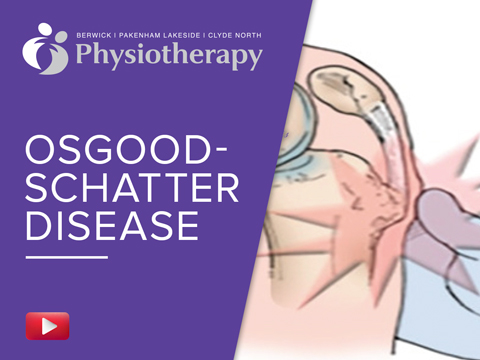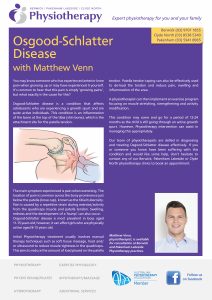You may know someone who has experienced anterior knee pain when growing up or may have experienced it yourself. It’s common to hear that this pain is simply ‘growing pains’, but what exactly is the cause for this?
Osgood-Schlatter disease is a condition that affects adolescents who are experiencing a growth spurt and are quite active individuals. This condition is an inflammation of the bone at the top of the tibia (shin bone), which is the attachment site for the patella tendon.
The main symptom experienced is pain when exercising. The location of pain is common across the bony prominence just below the patella (knee cap), known as the tibial tuberosity. Pain is caused by a repetitive strain during exercise/activity from the quadriceps muscle and patella tendon. Swelling, redness and the development of a ‘bump’ can also occur.
Osgood-Schlatter disease is most prevalent in boys aged 11-15 years old, however, it can affect girls who are physically active aged 8-13 years old.
Initial Physiotherapy treatment usually involves manual therapy techniques such as soft tissue massage, heat and/ or ultrasound to reduce muscle tightness in the quadriceps. This aims to reduce the amount of load placed on the patella tendon. Patella tendon taping can also be effectively used to de-load the tendon and reduce pain, swelling and inflammation of the area.
A physiotherapist can then implement an exercise program focusing on muscle stretching, strengthening and activity modification.
This condition may come and go for a period of 12-24 months as the child is still going through an active growth spurt. However, Physiotherapy intervention can assist in managing this appropriately.
Our team of physiotherapists are skilled in diagnosing and treating Osgood-Schlatter disease effectively. If you or someone you know have been suffering with this condition and would like some help, don’t hesitate to contact any of our Berwick, Pakenham Lakeside or Clyde North physiotherapy clinics to book an appointment.


